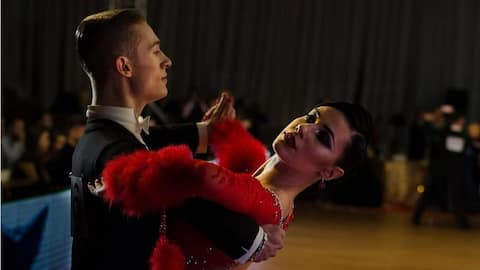Artistry and evolution of ballroom dancing across eras
What's the story
Ballroom dancing—yes, the elegant tradition where men gracefully bow to ask ladies for a dance in grand, decorated halls. Done in elaborate gowns and sophisticated suits, it's an elegant art form that traces its origins back to the early 16th century in European courts. Initially a display of social status, it has evolved over centuries. Let's delve deeper into the history of ballroom dancing.
Concept
Birth of ballroom dance
Seen in Netflix shows like Bridgerton, the roots of ballroom dancing delve into the extravagant courts of 16th-century Europe, where it served as both a spectacle of social status and an art form. Originating with the waltz, this dance style evolved through the ages, influenced by societal changes and cultural shifts, becoming a symbol of grace and refinement.
19th century
Rise in popularity
As the 19th century unfolded, ballroom dancing shed its exclusive roots, captivating the masses in dance halls and social events. This era witnessed the emergence of iconic dances like the Viennese waltz, foxtrot, and tango, which became a cultural phenomenon. Ballroom dancing, once confined to the aristocratic elite, bridged social divides, enchanting people from all walks of life as a cherished form of expression.
20th century
The golden era
The 20th century marked the golden age of ballroom dancing, with iconic partnerships and the birth of timeless classics like the quickstep and cha-cha. Hollywood films immortalized the elegance, transforming ballroom dancing into a global sensation that reached far beyond dance halls, solidifying its status as both an art form and a source of entertainment.
21st century
Evolution in the modern age
Adapting to changing times, ballroom dancing welcomed new styles and influences in the 21st century. Latin American dances such as the samba and rumba infused vibrancy, while competitive dancing introduced athleticism and precision. This modern era embraces diversity, reflecting the evolving tastes and preferences of dancers worldwide, ensuring the continued relevance and appeal of ballroom dancing.
Today
Ballroom dancing today
In the contemporary landscape, ballroom dancing thrives as a dynamic art form and a popular social activity. From dazzling performances on reality dance shows to community classes, it continues to capture hearts globally. The enduring appeal of ballroom dancing offers individuals a chance to connect, express, and experience the joy of rhythm in a world that is constantly evolving.
